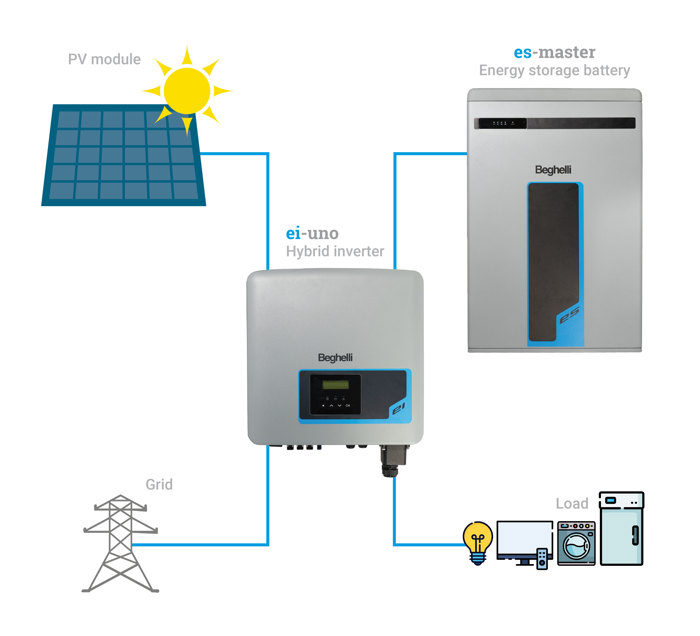News
31 January 2023
Our solution for photovoltaic energy storage
Save on bills with our storage systems, hybrid inverters and the Beghelli Solare ecosystem
The energy transition of the European Union is a hot topic in this period. Based on the European Green New Deal and the recent REPowerEU plan, it is part of an ambitious project to reduce net greenhouse gas emissions by at least 55% by 2030, as well as achieve climate neutrality by 2050.
The goal is to convert the EU to renewable energy. But how can we do?
We at Beghelli have taken up the challenge by dedicating a line of products for the accumulation of solar energy, which optimizes the electricity produced by photovoltaic panels and which allows for real energy savings on bills. In this way, families and companies protect themselves from the continuous changes in the price of electricity and together we help reduce emissions with clean energy.
We at Beghelli have taken up the challenge by dedicating a line of products for the accumulation of solar energy, which optimizes the electricity produced by photovoltaic panels and which allows for real energy savings on bills. In this way, families and companies protect themselves from the continuous changes in the price of electricity and together we help reduce emissions with clean energy.
The Beghelli Solare hybrid storage system bases its technology on a range of high-performance inverter and battery modules, capable of managing and storing the energy produced by a photovoltaic system with maximum efficiency.
"The transition to renewable sources is the only possible way to guarantee a future for the planet and above all for our children.
These products also make it possible to significantly reduce the energy bills of households and businesses,
an important result in times of hyperinflation" Gian Pietro Beghelli
These products also make it possible to significantly reduce the energy bills of households and businesses,
an important result in times of hyperinflation" Gian Pietro Beghelli

The energy produced by the photovoltaic panels is conveyed to users for immediate self-consumption, while the remainder is stored in the batteries and can be used when the system is not producing, for example when the sky is cloudy and in the evening, just when it serves more.
A hybrid inverter is an "enhanced" inverter which, in addition to converting direct current into alternating current, is able to manage and coordinate the flows of electricity from the photovoltaic system, the battery and the grid. Furthermore, it directly powers the active loads and, when these are not in operation, stores the energy through the lithium batteries.
The basic system consists of an inverter and one or more batteries to obtain a capacity of up to 23 kW. By adding the Battery Management System to the system, which optimizes battery management, it is possible to expand the electricity storage capacity up to a maximum of 46.1 kWh.
The basic system consists of an inverter and one or more batteries to obtain a capacity of up to 23 kW. By adding the Battery Management System to the system, which optimizes battery management, it is possible to expand the electricity storage capacity up to a maximum of 46.1 kWh.
or find out in our catalogue
energy storage and efficiency systems
energy storage and efficiency systems
